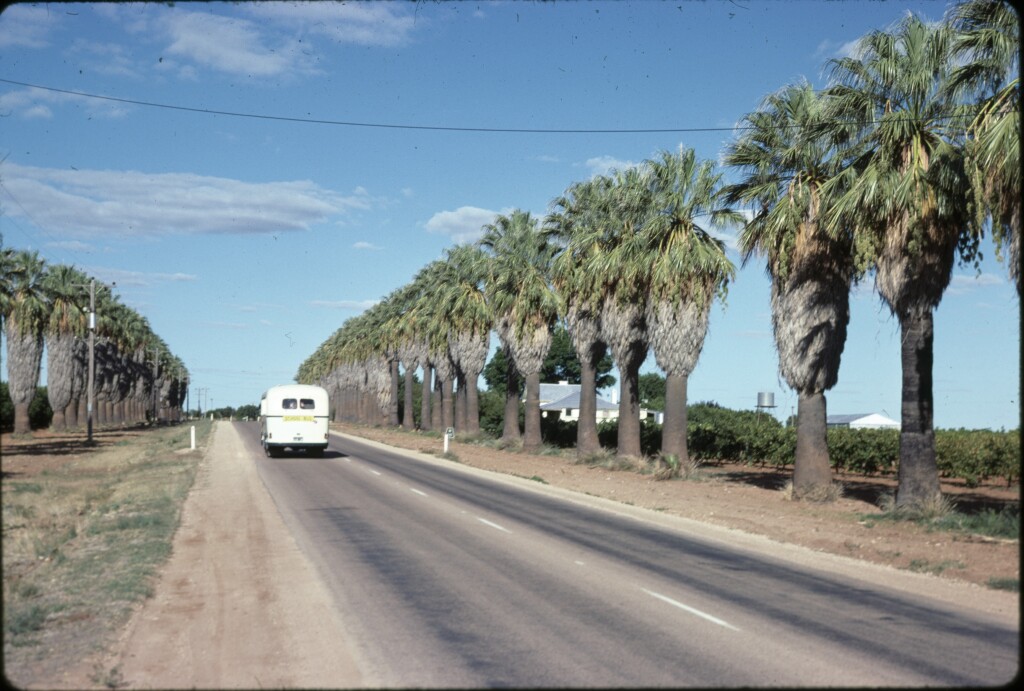Washingtonia
Trunk single, grey, often covered with persistent leaf bases. Leaves forming dense, usually elongate crown at top of trunk; lamina costapalmate, almost circular in outline, deeply divided, apex of lobes usually cleft or tattered into fibres, plication induplicate; segments lanceolate, basally connate, bearing cottony fibres between segments, sometimes drooping; petiole split at base, armed or not; abaxial hastula absent; adaxial hastula irregularly shaped. Inflorescence axillary, paniculate, much branched, arching beyond leaves. Flowers subsessile, outer perianth segments fused, inner fused into tube basally; stamens 6, dorsifixed; carpels 3, styles fused. Fruit a drupe, ca. 10 mm long, black, exocarp smooth; mesocarp thin, fleshy; endocarp thin. Seeds ellipsoid.
2 species, both native to western North America and Mexico, and both naturalised in Victoria.
Both Washingtonia filifera and W. robusta are grown as ornamentals in Victoria.
Species of Washingtonia are known for their ability to survive extreme temperatures.
The two species are known to hybridise, the hybrid known as Washingtonia × filibusta Hodel.
 Spinning
Spinning


